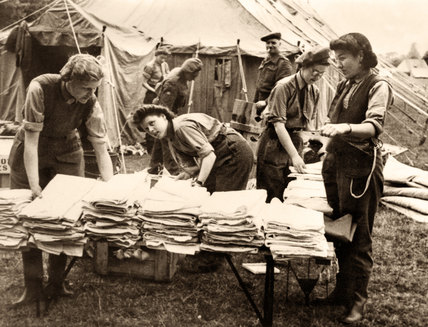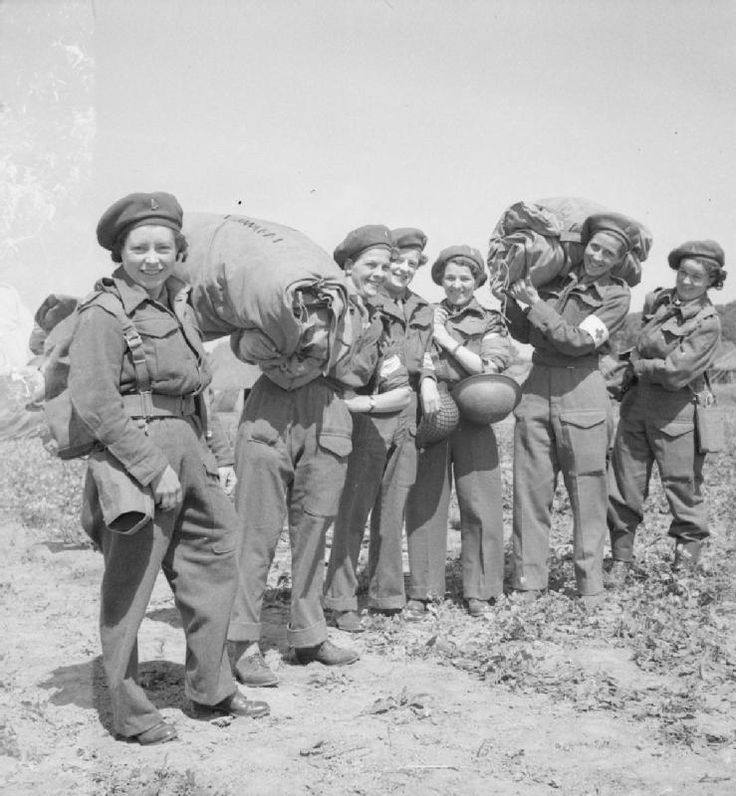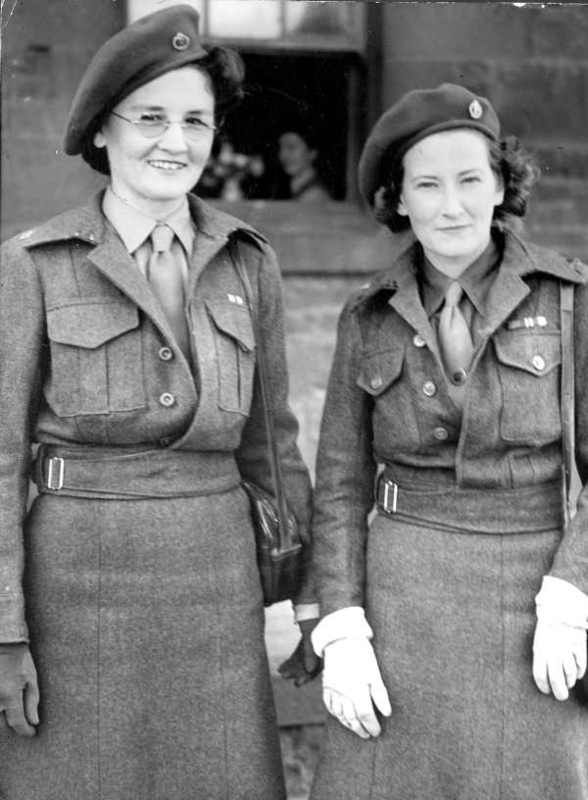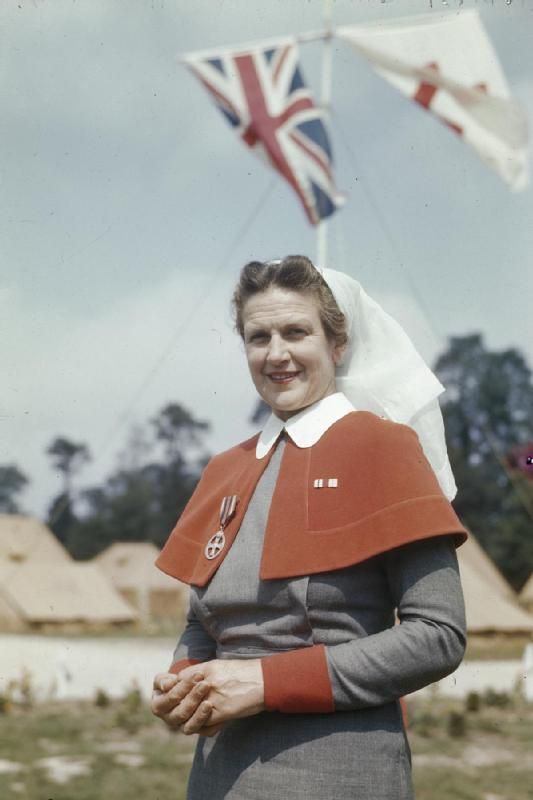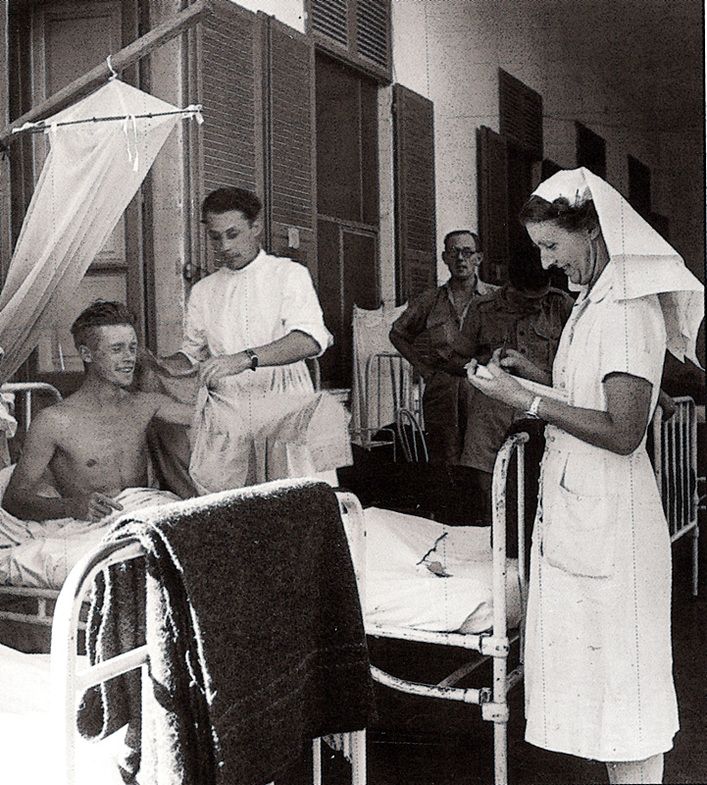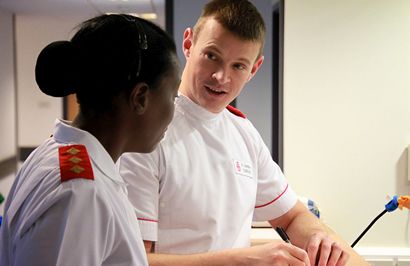Uniforms WW2 onwards
Context
Often we want to identify nurses by the uniforms they are wearing. Sometimes it is really obvious, but sometimes it is small identification features that lead us to recognise the nursing service, and the era. We are going to use a few examples below to help set out the identification features to look for (as well as things that do not help so much). I am always happy to help identify nurses in pictures.
WW2
Nurses serving in WW2 would be Queen Alexandra's Imperial Nursing Service (QAIMNS); Queen Alexandra's Imperial Nursing Service (Reserve) (QAIMNSR); or Territorial Army Nursing Serive (TANS). Pictures of them in ward dress can be distinguished as in WW1 by the tippet (scarlet for QAIMNS and grey and scarlet for QAIMNSR and TANS), and by their tippet medals. There was also a separate ward dress for service in the 'tropics'.
During WW2 nurses also wore battle dress. In battle dress the different services are indistinguishable. They also had a walking out dress with collar insignia and cap or beret badges that denoted their service.
As with all fashion, by the outbreak of WW2 hairstyles and uniform lengths reflected general trends. Below are a selection of photographs depicting nurses from WW2:
WW2 onwards
Over time uniforms have evolved both with general fashion trends, but also toward more uniformity with the Army generally, to the point where Army nurses now wear the same uniform as all other Army personnel when on operational duties or duties away from peacetime clinical work. For this they now wear a much simplified uniform more in alignment with their colleagues in the NHS who they work alongside.
We now also see other ranks as well as officers, and of course men!
The following pictures and videos demonstrate the changing style of uniform since 1945:
